Access More Boat Tests
Already have an account? Login
Zen Marine ZEN 39 (2022-)

BoatTEST has 11 content partners and the newest one is e-Ribbing.com, a Greek website dedicated to reporting on Rigid-Hulled Inflatable Boats (RIBs). The report that follows, is courtesy of that website.
The ZEN 39 joins the mega RIB market, delivering an outsized performance with its twin 300-hp Mercury Verado outboard engines. The deep-V hull handles rough water, slicing through 5-foot waves to achieve a 59-mph top-end speed. For overnighting, the 39’ (11.89 m) boat can be configured to sleep two adults and comes with a head.
Note: The following report and test was conducted by Thomas Panagiotopoulos, the publisher of e-Ribbing.com in Greece. He is a technical writer and has an abundance of experience piloting RIBs offshore. This article comes courtesy of e-Ribbing.com.
Zenmarine.gr owner Nasos Nikas’ invitation to sea trial the new ZEN 39 came with a weather forecast: Steep, breaking seas, wave height 5’ to 6.5’ (1.52 m to 1.98 m). North winds were consistent at 25-31 mph with gusts of 35 mph.
The weather conditions were prohibitive for many rigid inflatable boats, but not for the ZEN 39 with twin 300-hp Mercury Marine Verado outboard engines, which seemed to be in its natural environment.
Ideal Test Environment
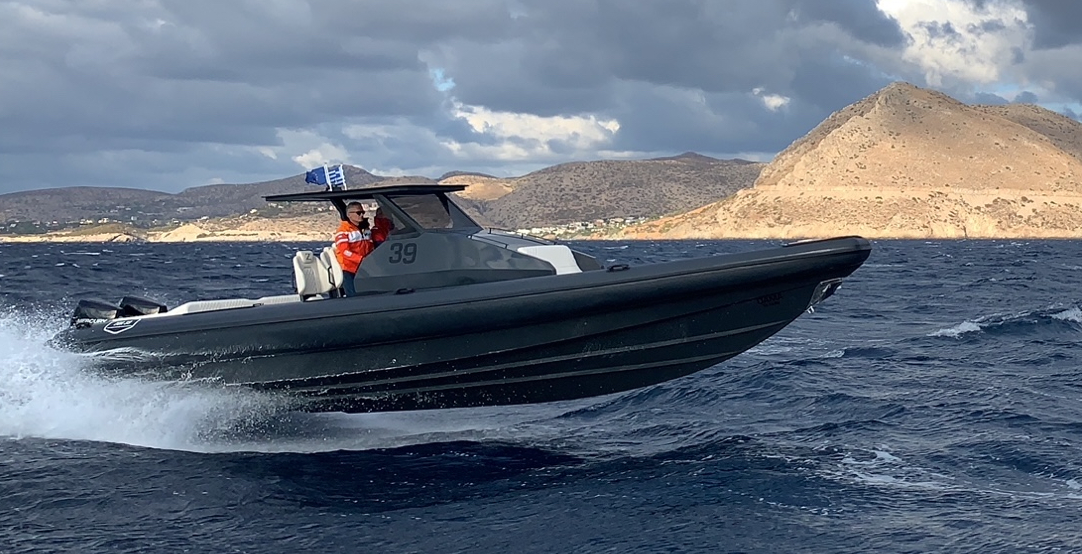
The ZEN 39’s sharp bow entry of 62 degrees narrowed to a deep V of 25.5 degrees at the transom. The narrow and knifelike bow indicates the RIB was designed for offshore boating.
Sliding behind the console provided a wonderful view of the bow and put the captain in complete control over the horizon and the high peaks of the waves. The sea trial started heading west of the Patroclus islet with the bow pointed south and the waves on the stern.
As we moved away from shore, the height of the waves kept increasing, the propellers steadily pointed at the bottom of the dark waters. The ZEN 39’s bow was standing firmly up and penetrated waves effortlessly rather than plowing through them. While the hull was bridging the waves and its very deep V ensuring a very smooth ride with absence of spray on the deck.
Deep-V RIB Disadvantages
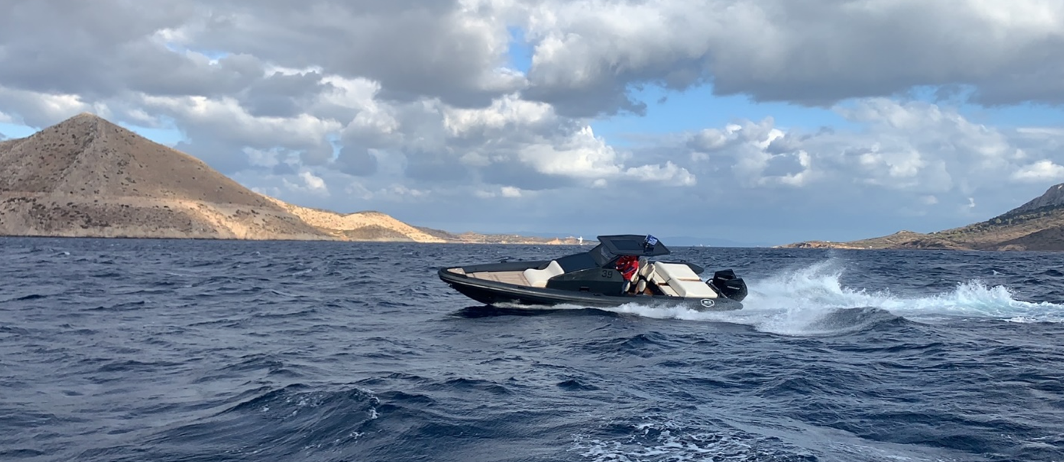
Knowing the disadvantages of the deep-V RIBs, the co-pilot insisted on riding to the back of the waves for quite some time looking for some irregular waves. We may feel uncomfortable when traveling in head seas hitting the waves with our bow, but the hazardous situation is one in which the weather is coming just behind us.
RIBs are difficult to control in following seas, not in head seas.
Especially when driving a deep-V hull, where if the sharp bow entry sinks in the back of the wave, it can brake and steer the boat abruptly with unpredictable consequences. The best way to counter that is a high angle deadrise at the transom in combination with the proper balance of the boat. The ZEN 39 never read the waves even running at higher speeds.
It’s impressive that a 39’ (11.89 m) RIB with extreme deep V and full loads is capable to run with only 600 hp on the transom.
Luxury and Performance

The secure bucket helm seats, built by the Greek company DAIS Inox, were equipped with a hydraulic suspension system for absorbing vibration and adjustable height. The seat is designed to provide full lateral support, allowing the operator to have absolute control of the rib even in tight maneuvers at high speeds or in bad weather conditions.
The seat proved its worth with the bow to the north, where the deep V of the hull of ZEN 39 had a clear advantage. The high deadrise angle combined with the length-width ratio, which is much larger than the minimum recommended of 3.5 to 1, did what they were intended to do. Extremely soft cruising, which became even more impressive pushing the throttle forward, with the RIB maintaining a good riding angle.
The aft portion of the hull seemed to hold the RIB low and keep it in constant contact with the water, preventing it from taking off. This slight “suction” that I received was obviously a product of the partial vacuum created due to the counter-designed step that starts from the height of the helm seats.
Performance Numbers
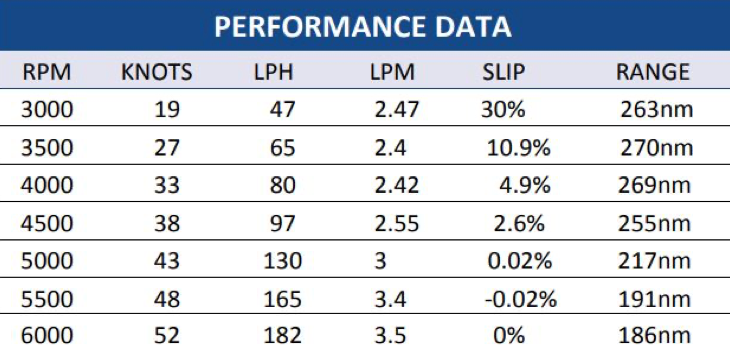
The ZEN 39 has all the credentials to travel fast in specific conditions. The cruising speed depends on the experience and skill of the driver who is operating the boat.
With 171 gallons (647.31 liters) of fuel and four people on board, the ZEN 39 was on plane at 16 mph with the outboards turning 2700 rpm and burning 11.6 gallons (43.91 liters) of fuel per hour.
At 3000 rpm, the speed was 22 mph with the engines needing 0.65 gallons (2.46 liters) per nautical mile, while at 3500 rpm the boat was traveling with 31 mph burning 0.63 gallons (2.38 liters) per nautical mile.
The fuel consumption numbers are surprising considering the boat’s length, its small horsepower, the loads we carried and the foul weather conditions during our sea trial. It’s worth another test to reconfirm the fuel numbers.
Quick to Plane
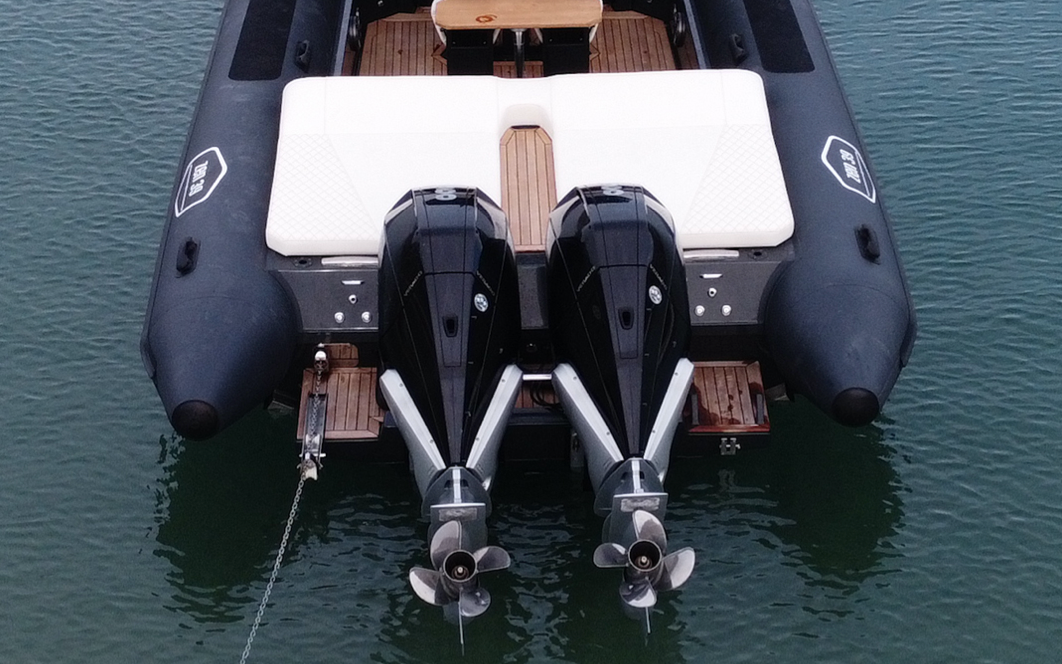
The 300-hp Verado engines were turning 16” x 19.5” (40.64 cm x 49.53 cm) Enertia ECO XP propellers with the RIB planning in 5 seconds. Hitting the throttles, the boat accelerated to 34.5 mph in 9 seconds and 46 mph in 14 seconds.
The ZEN 39 ran a comfortable 38 mph at 4000 rpm with the engines burning a steady 0.63 gallon (2.38 liter) per mile, while upping it to 44 mph at 4500 rpm the fuel burn rate increased slightly.
It’s rare to see lower fuel consumption in similar boat-engine combinations. It is great to have almost the same fuel consumption of 0.66 gallons (2.5 liters) per nautical mile on average, in a wide range of speeds from 22 to 33 mph.
Wide Open Throttle
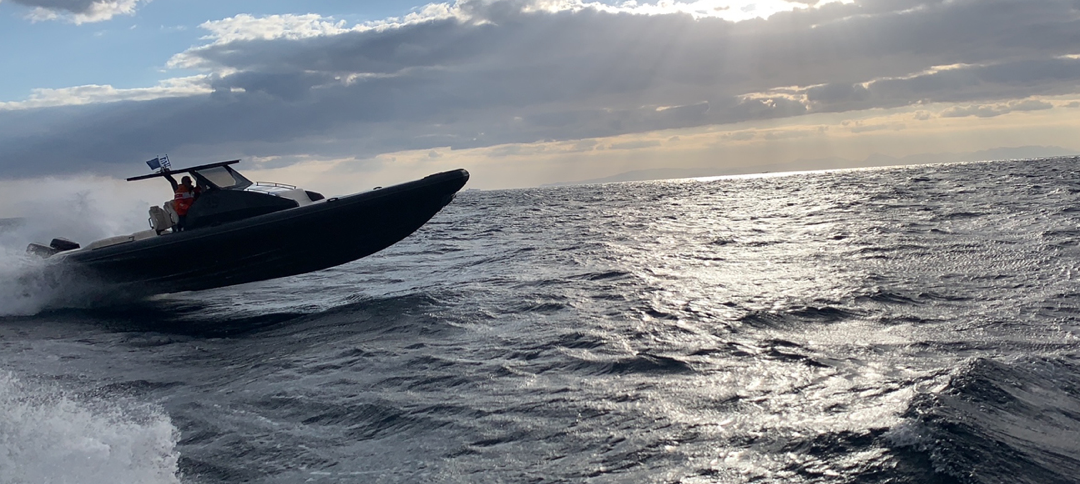
Running at wide-open throttle, the ZEN 39 reached 59.8 mph even in less-than-ideal weather conditions. The prop slip percentages after 3500 rpm were off the charts. It is rare to see them slip eliminating at WOT and get the most out of your propellers, running at their absolute, theoretical speed.
ECO Enertia XP propellers are designed to keep the boat out of the water and minimize wet surfaces, resulting in high cruising speeds and maximum fuel economy, despite the loads they carry or the inclement weather.
Credit goes to the hull that was set up perfectly for the weather conditions.
On Deck
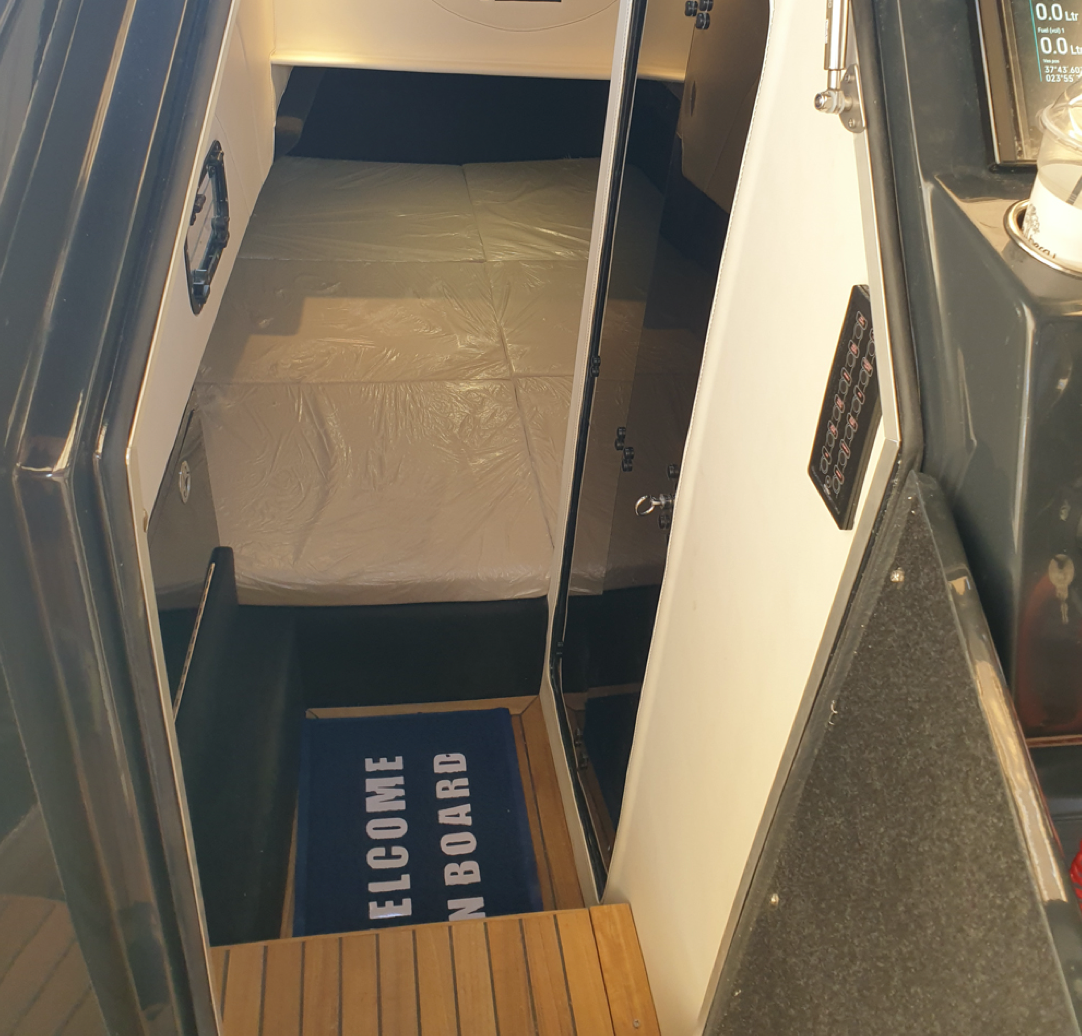
No RIB is perfect for everyone, but every RIB has its ideal owner.
If an owner’s priority is soft and comfortable cruising, even in bad weather conditions, then it usually comes at the expense of space and accommodations on deck.
If the deep V of the hull is not a high priority and a buyer prefers plenty of space on the deck for entertaining, then the ZEN 39 is probably not for him/her. Its narrow bow restricts living on board, but the cabin can still seat two adults comfortably.
Accommodations
The berth is 76” (193.04 cm) long and 50” (127 cm) wide at the headrest with the width near the feet at 78” (198.12 cm). On both sides of the berth, there are two long and narrow shelves, ideal for placing small items, books and equipment.
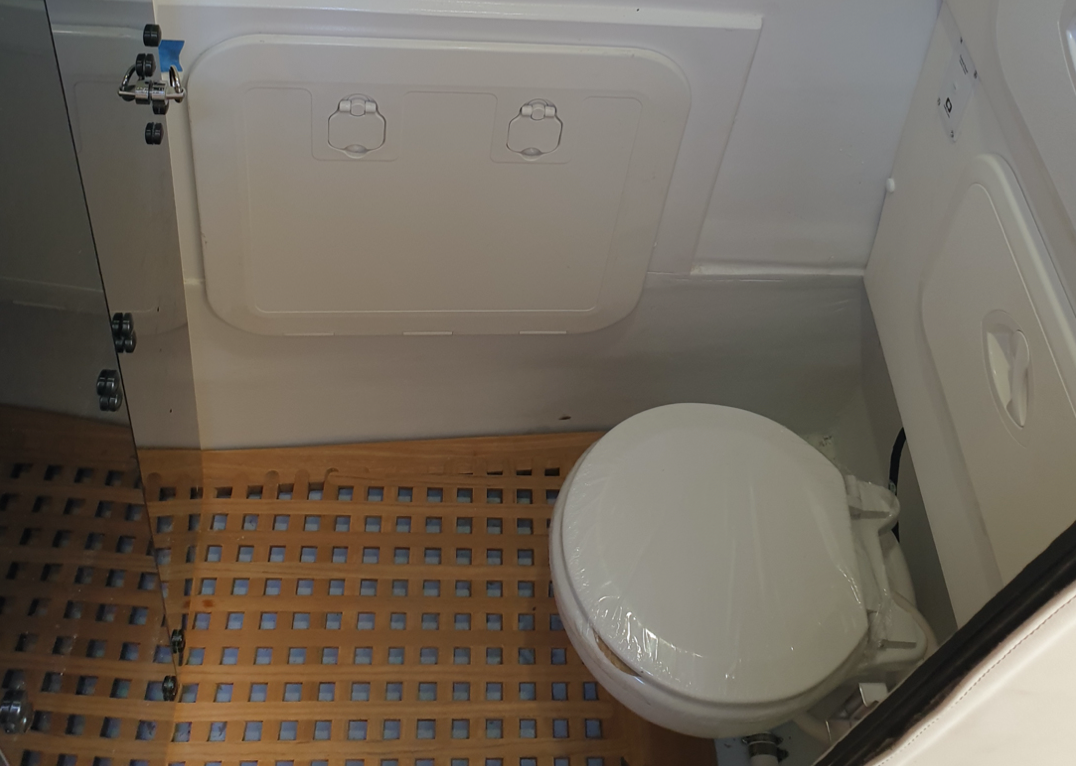
To port of the headroom, there is a large cupboard while under the pillows of the bed there are two large lockers that can accommodate all the equipment of the cabin.
The headroom of the cabin has a height of 5’6” (1.68 m), while the separate head has dimensions of 5’7” x 2’6” x 2’1” (1.7 m x .76 m x .64 m) and all the necessary cabinets for easy access to the electrical installation of the console.
Helm
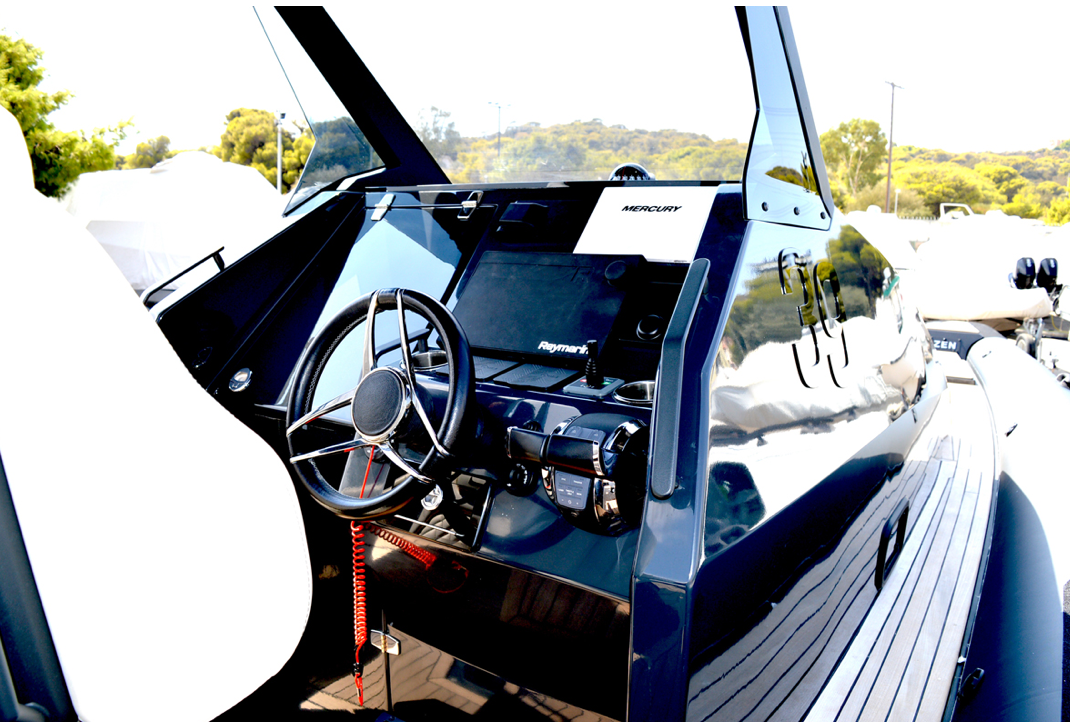
The pilot station can accommodate large navigation screens and any instrument necessary. In addition to the two large screens, the panel has a marine stereo, Hydrotab trim tabs (intercepter tabs made in Greece using compressed air) and the stern thruster controls. Cupholders were to port and starboard. The windshield is raised high and in combination with small extensions on the port and starboard, it protects both the instruments and the co-pilot from wind and spray.
The Bow
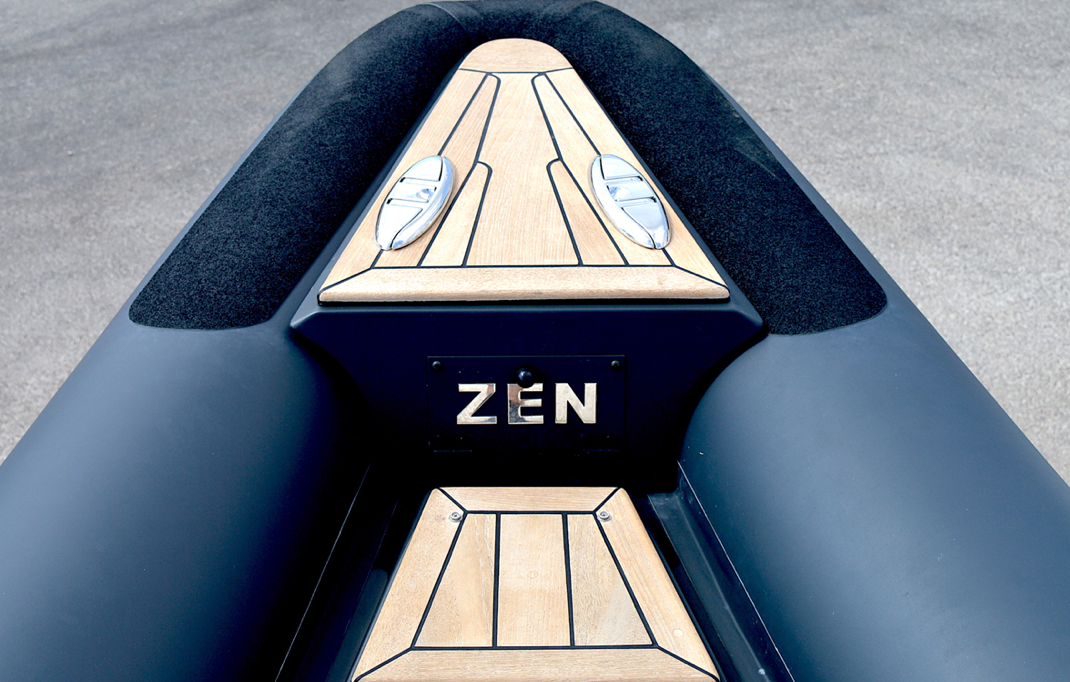
Steps on each side of the console lead to passageways to the bow area. The small hard nose of the bow is lined with teak and is located between the junction of the tubes. A small hatch gives access to its interior, which is quite limited, but ideal for the bowlines.
Further aft, and slightly elevated from the rest of the deck, is the anchor locker. Divided into two compartments, one locker has the windlass motor and the electrical installation and the other contains the anchor chain.
The front of the helm console had a built-in double seat lounger ideal for sunbathing in smooth-riding conditions. The passageways leading to the helm station are quite narrow and slightly lower than the height of the tubes.
Spacious Stern
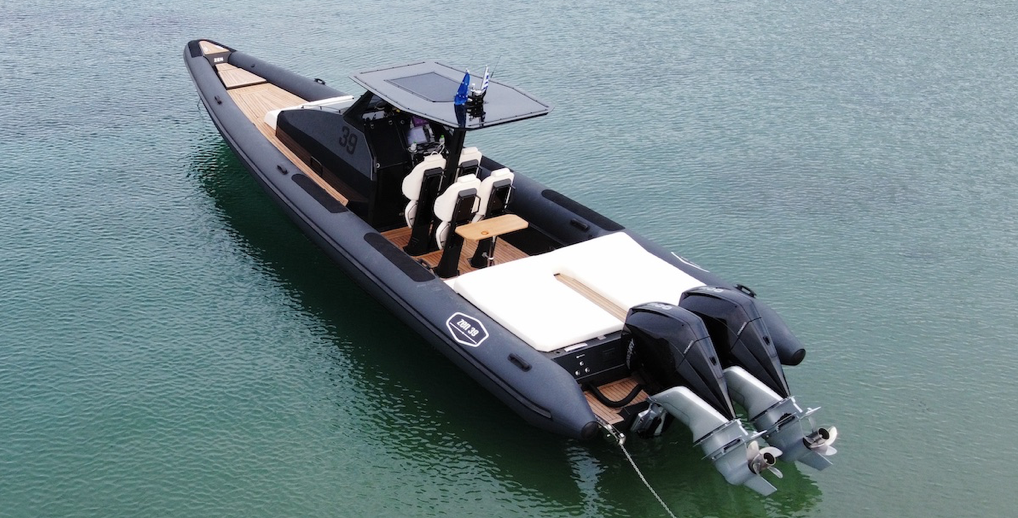
Compared to the bow area, the stern lounge is large and spacious. The stern cockpit can be configured with two rows of seats or with a wet bar in place of rear seats.
With a width of 6’3” (1.91 m), the aft lounge can accommodate four people, while underneath there are two storage spaces (one for a refrigerator and the other for equipment).
The sundeck has a central passageway that leads to the swim platform and with the appropriate addition, it turns into a large sunbathing and relaxing berth. The space under the sun pad can be configured into a second cabin that can accommodate two adults.
Water Access
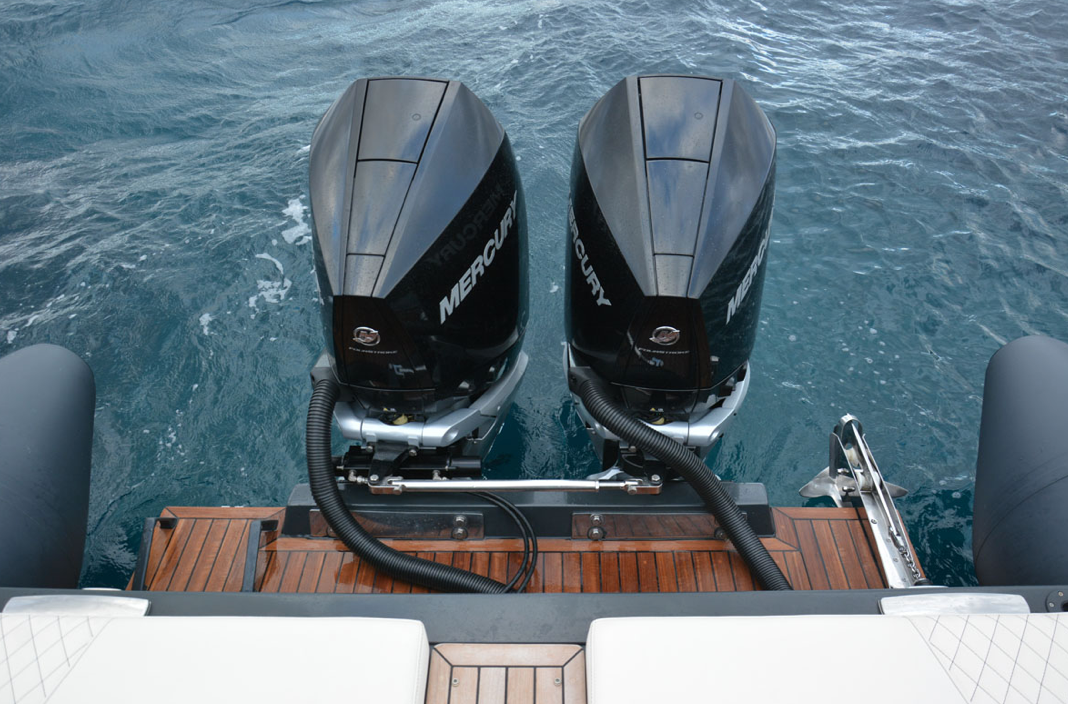
The wide swim platform offers space to enter and exit the 39’ (11.89 m) boat on the starboard side. Our preference was for the engine’s hoses to pass under the platform, instead of over it as seen in the image above. The platform can be extended several centimeters to the port and starboard by placing a sliding ladder in parallel so that it can move freely without risk of injury.
Overall
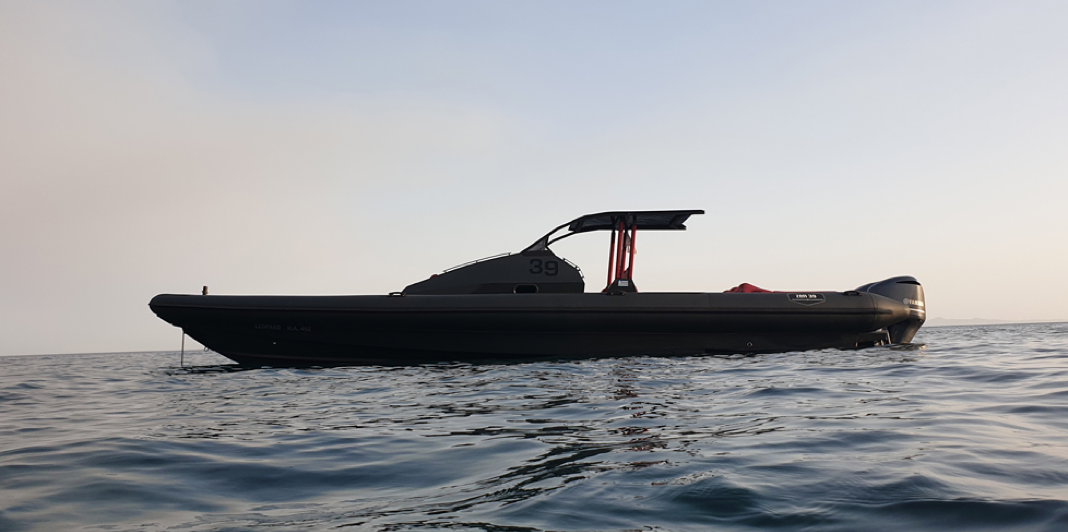
The ZEN 39 is a big boat that is agile thanks to the pair of Mercury Verado 300 engines on the transom. The power plants delivered strong fuel economy even running in rough seas.
Contact
Zen Marine
zenmarine.gr
Tel: +30 6945 550 661
Article courtesy of e-ribbing.com
